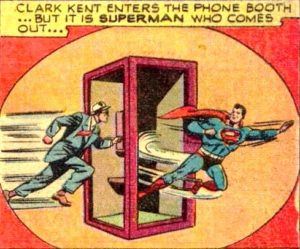Recently had a lengthy after-action discussion at our table about how initiative and combat timing works. You can read the basics of our procedure
here. In response I wrote the following and figured since I WROTE it I may as well post it.
Khari kneels
before an unopened chest, hoping to find something useful therein.
Behind her about 15' back in an arc are Kirkas, Dakora, Castellan and
Serynah. Turn's out the chest is a mimic. Mimic takes a grab at
Khari, fails, and I call for initiative.
I then go around the table asking for
your result. Kirkas 17, Dakora 11, Serynah 12, Khari 12 and
Castellan 9. I enter these in the appropriate field on the combat
sheet. The monster's initiative is already there. The dice roller
and modifier were input when I “built” the encounter. The sheet
is formatted to indicate who goes first, second and third. In THIS
case Kirkas is first, Serynah is second and Khari is third.
Kirkas tell's me he going to attack with
his bow. He rolls 2d20 to determine if he hits, then rolls to
determine damage done. I update the mimics HP according AND note
that Kirkas has spent 1 AP AND note that the thing Kirkas did (fire
his bow) takes 8 tics. Since he STARTED on 17 the spreadsheet then
indicates that Kirkas will go again at 9.
Next up is Serynah. She opts for a 3rd
level sleep spell. She rolls a d20 to see if she successfully casts
the spell. She'll need to roll 10 or better (10+spell level-charisma
modifier.) She's successful but a Mimic has an average of 58 HP.
Even if she rolled all 8's she'd only score a 56 and be unable to
Sleep the Mimic, so no joy. I note that she has spent TWO AP (to
cast a leveled spell) and that it took 3 tics (one per level.) Since
she started on 12 she will next go on 9.
Khari is up next at 12, followed now by
Dakora (11), Kirkas (9), Sareynah (9), and Castellan (9.) Khari opts
to use her wild shape. This uses all three AP and takes the rest of
this turn so she's done.
Dakora opts for Witch Bolt. She
successfully casts the spell and the arc of energy connects to the
mimic. Since she cast it at 4th level she'll do 4d12
damage this turn and 1d12 for every turn hereafter so long as she
concentrates and takes no further actions. Casting the spell costs
her 2 AP and 4 tics. She'll be up again at 7.
Kirkas decides his archery isn't strong
enough so he swaps out his bow for Swiftstrike. That's an action and
takes a tic. He has 1 AP left and will be back up at 8.
Serynah is up next and has only one AP
left. Move? Probably not. Fire bolt. No need to check success as
cantrips are always successful. She DOES need to hit on a ranged
attack. BOOM! She hits. And now that she's 5th level it
does 2d10 damage. But her AP are spent so she's done.
Castellan finally gets to step up. So
to speak.. He summons Selune's Strike which takes one tick but costs
no AP, but he has to wait for the next tic. As the cantrip takes
effect Kirkas gets to go again.
But wait! Oh no! The mimic is ALSO in
at 9. That wicked tongue lashes out at the now-wildshaped Khari. It
hits, does 7 points of damage. Khari gets to try to avoid the
grapple with STR vs DC 13. Let's say she doesn't. The mimic only
has one attack so IT'S done but it'll be biting down NEXT turn.
Kirkas and Castellan go again at 8.
Kirkas casts Hunters Mark (0 AP) for 1 tic, moving to 7. Castellan
realizes he probably should have cast Moonbeam so he does it NOW … spending 2 AP. He succeeds at casting it, the mimic fails it's ST at
disadvantage and begins to morph back into its gloppy shape. It
takes radiant damage from the beam. Kirkas now has to move to get
close enough to swing, using his final AP.
Dakora maintains her concentration
hoping to finish the beast next round. And unless I've missed
something above thus endeth the round. Six seconds. Roll again?
Doubtful. I'd likely allow Dakora's Bolt and Castellan's Beam to
finish the beast without playing it out.
The initial guideline for the whole
shebang was Greyhawk
Initiative. And I've used Tao
for guidance. And a handful of other content creators. I keep
tinkering with this table to make it better. Latest iteration (NOT
used above – will use next session.)
Most stuff: 1
Move, per 10': 1
Spell: 1 per level
Grapple, Potion, poison: 5
Find something: 1d8+2
But the problem is weapons. How long
should it take to use them? OLD system was 2 for light/finesse. 4
for versatile, 6 for heavy, 8 for bows and 10 for crossbows.
So I'm gonna try this next time:
Light/finesse 1. Heavy/2-handed 3. And I'm still trying to come up
with SOMETHING that makes sense for archery. Optimum real world rate
of speed I've found was 12 arrows per minute which implies only 1.2
per melee round. By "rule" Kirkas could fire up to six. I need to do more
research and do NOT wanna penalize Kirkas.
And after sleeping on this the long term solution becomes clear: ranged weapon attacks require 2 AP. Suggestions welcome.
















